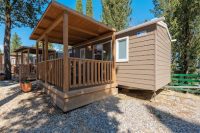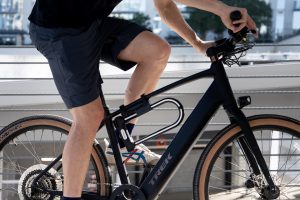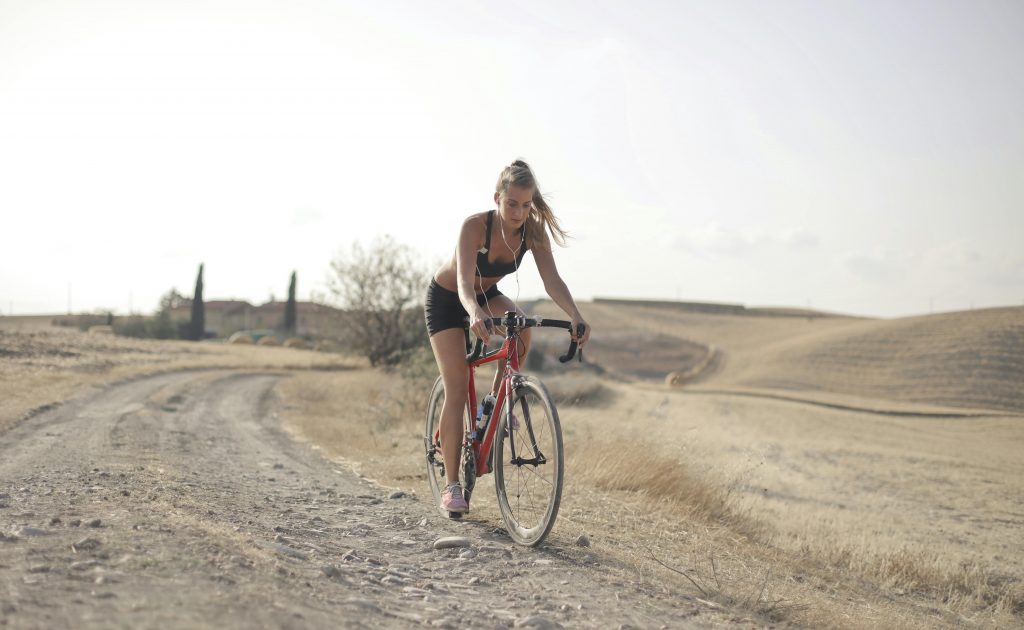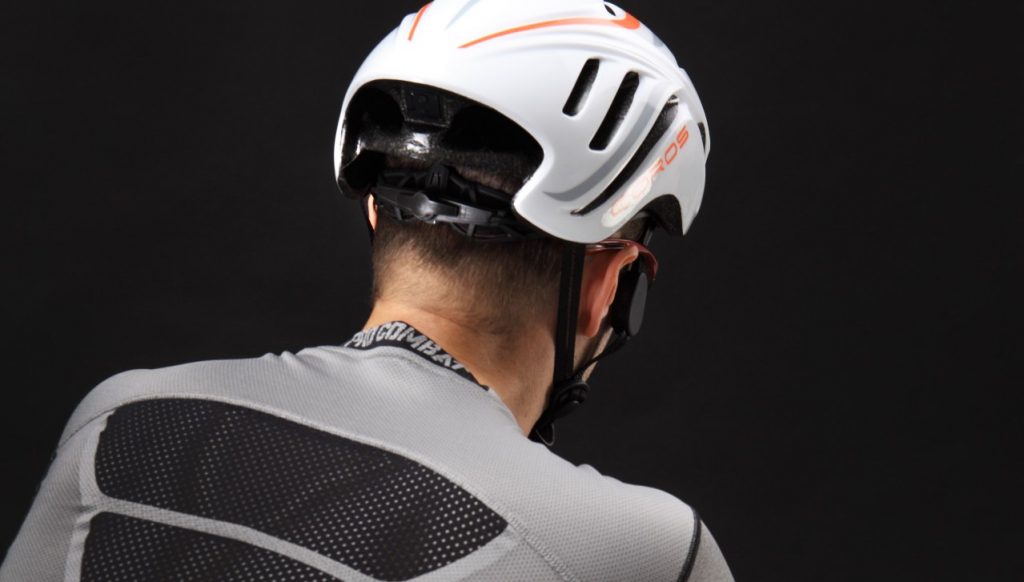The GURU DFU system uses a series of hydraulic adjustments to help the rider arrive at an ideal balance of efficiency and comfort.
The bicycle is a curious machine. At one look, it’s the simplest thing. Just two pedals turning a chain, with only three primary contact points to control it all. Most of us master the mechanics of this system before we lose our baby teeth. But for those who invest enough time and energy into this simple machine, each element involved in the series of motions it takes to keep a bicycle moving forward becomes paramount. For this reason, one of the most central elements to achieving this motion is far more important than we usually give credence to — the bike fit.
Whether experiencing debilitating pain that keeps you off your bike, finding a shortened window before discomfort mounts and cuts your rides short, or looking for that next performance edge, a proper bike fit can have tremendous value. But bike fits are not all created equal. Understanding certain key points about the science can help you evaluate the quality of a professional fit before taking the leap — and spending your money.
Laser-based fit systems such as Retül offer unparalleled precision.
A proper bike fit entails several points of reference, including three basic categorical focus points: reach, saddle height, and cleat position. But there is an almost infinite degree of adjustability in each of these points, including varying stem length and degree, handlebar width/shape/drop/height, saddle width and shape, pedal/shoe systems, saddle position, and hip angle.
So many different angles, products and adjustments are involved in this process that fitting can seem like an overwhelmingly complex endeavor. This is precisely why an entire industry segment has developed around this singular science.
Comfort and Injury Prevention Go Hand-in-Hand
Common discomforts that drive riders away from their bikes are many, including numbness in the extremities, joint pain, back pain, and neck pain. It’s not uncommon for these problems to pop up after years of riding on the same bike or in the same position. Younger bodies can put up with a lot for a long time, but the silent effects of a poor bike fit are cumulative. At some point our current position, no matter how it was derived, will likely need to change.
Performance Benefit
Team Sky is famous for its marginal gains theory where they focus on the minute details that make up the performance differences. Arguably, one of the biggest sources of marginal gains can be derived from a proper bike fit. Allowing a rider to more efficiently pump out the watts can add up to a substantial improvement over time, whether measured in terms of a single race, a stage race, a season, or a career.
There are so many saddles on the market, each claiming to be the best. But a true measurement of your sit bones helps determine your best options.
On more than one instance, I’ve been on bike rides with novice riders who insisted on riding with a low saddle height so that they could touch the ground on either side when stopped without getting off the saddle. While this might offer convenience for stop and go commuting, a saddle that is too low is extremely inefficient and can place major stress on your knees. It also places the majority of the load on the quadriceps.
While our quads are big muscles, they are not our only muscles. Sharing the load with the other muscle groups that make up our lower body can make for dramatic improvements in power and endurance. On multiple occasions, riding with friends whose saddles were too low, I’ve watched marked improvements in performance immediately after encouraging them to raise their saddles.
Buying A New Bike
“One of the worst feelings we encounter in the fit studio is when a client shows up with a shiny new carbon bike that is either too big or too small for them,” explains two-time U.S. national champion Bart Bowen, owner of Bowen Sports Performance in Bend, Oregon. “It happens all the time, and it’s hard when we can only do so much to help.”
A rider’s relation to their bicycle begins with the geometry of that bicycle.
Although there are certain modifications that a fitter can make to a bike to accommodate disparities, not every bike is universally adjustable. This is why most manufacturers produce such a wide size range in the first place. Unfortunately, bike shops have been known to be a bit too eager to make a quick sale, pushing stagnant inventory on unassuming customers. Between that sort of uninformed (or misinformed) purchasing decision, and the self-sourced Internet purchase that is so common these days, there are far too many people in this predicament.
The best solution is a proactive one. This is why some fit studios offer a discounted “Pre-fit” package in which the exact size range is identified, even down to sizes in a certain brand or model of bike, prior to a new bike purchase.
“This way the customer can take confidence into the purchase, knowing that their several-thousand-dollar decision is going to be right for their body,” adds Bowen.
His studio blends several methods to bring riders to what they call an “optimal fit.” But the central element is the GURU Dynamic Fit Unit (DFU). The DFU sits on a platform in front of a big screen monitor, showing the rider his or her real-time position changes in both a video feed and a series of live measurements. These measurements are reflections of each of the multiple geometric changes that the fitter makes via a series of hydraulic and manual adjustments, to determine the most efficient and comfortable position.
With a projected image of the rider in real-time, the GURU fit captures geometric proportions at every adjustment and translates those dimensions into a complete fit assessment.
In the past each of these measurements had to be adjusted manually until arriving at the ideal geometry. This painstaking process limited adjustability due to the interruption in sensory feedback from the rider, and allowed Bowen’s team to only get close to an approximate set of feedback before arriving at a position.
“But with the DFU, all these same adjustments can be made in real time and the rider can truly feel that sweet spot as we toggle through each fractional change to arrive at their Optimal Fit,” he explains.
Different Methods
Besides the Optimal Fit that Bowen Sports Performance offers, there are several other popular methods for fitting a bike. Retül is a popular, less expensive alternative to the $300 Optimal Fit. Bowen says they still use many of these precision elements in their studio, especially when transferring a geometry derived from the DFU over to a client’s actual bike.
The Specialized Body Geometry fit process falls in line with the Optimal Fit in terms of both cost and time. But it relies more heavily on direct rider feedback, fitter experience, and traditional visual tools.
Measuring the saddle height is the most central, and perhaps most basic element of a bike fit.
DIY Options
Several phone-based apps exist, using your phone’s camera to project a gross range estimate based on your body’s geometry and the geometry of your bike. While these apps are far cheaper than professional in-house fitting services, they are very wide ranging in terms of precision. These options are available on Apple Store or Google Play. But be prepared to find a range within 25mm, rather than the precise fit range that’s within a millimeter or two that a good professional fit service can offer.
Cost
Professional bike fits at performance labs can cost upwards of $500. The Optimal Fit is $300 at Bowen Sports Performance. Some bike shops offer a basic fit service for free with a new bike purchase, but these fits are often run with makeshift fitting tools and lack a professionally trained fitter to provide the scientifically backed reasoning behind their conclusions.
A full off-the-bike physiological assessment is helpful in diagnosing individual discrepancies and intricacies prior to the on-the-bike fit.
Bottom line, the best fits include a blend of science and experience. Experienced fitters simply know what works for most riders and what doesn’t. But experience alone can be biased and simply leaves too much room for error. Spending $500 on a proper bike fit can seem a bit extreme, but if it means the difference between riding and not riding, it’s likely well worth the money.





























